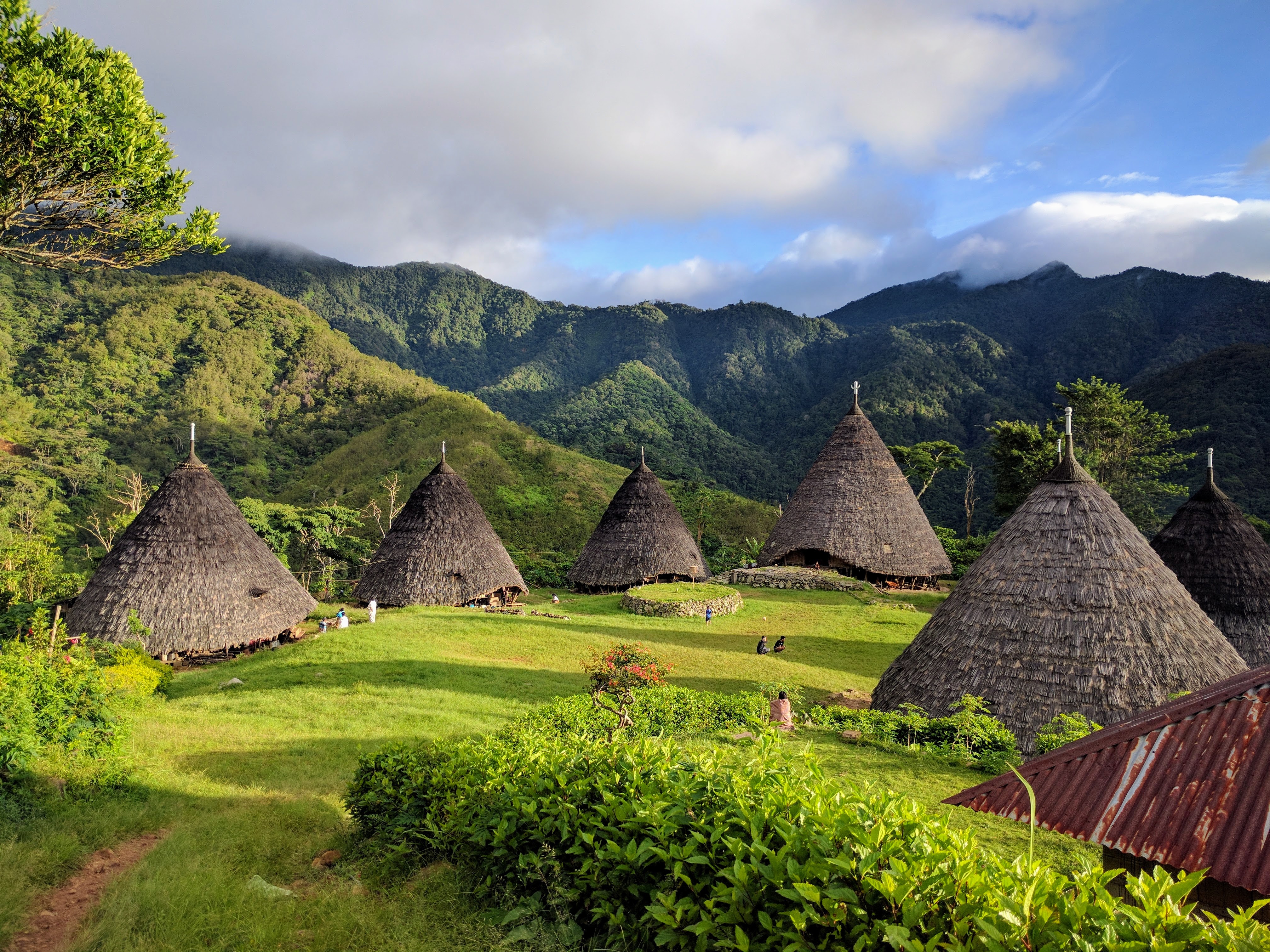Wae Rebo: Spiritual Landscapes

“This is the shape of our land here.” – said the old woman who welcomed me to Wae Rebo after gently shaking my hands. They do so with modest pride, which implies “this is the way we do things here” and “what you see is what you get.”
This is the land of steep slopes and stony fields, where hardworking people enjoy the products of their land and labor. The statement seems to stress the spiritual connections between people and places in Western Flores: “our house may be humble dwelling but it is ours and we are part of it, and so are our fields and forests and mountains”.
Wae Rebo is an ancient Manggarai village perching atop the highlands well above 1,000 meters in southwestern Flores island, Indonesia. In this timeless village, the local folks carry on their traditional lifestyles that consist of subsistence farming of rice and vegetables and cultivating cash crops (notably coffee) and an animistic belief that connects people and landscapes.
Wae Rebo is surrounded by seven forested mountains that resemble a protecting wall and where the village itself looks like a shiny gem in the bottom of a valley, where seven conical thatched houses are built surrounding a big common village yard. Each house is big enough to contain 7-8 families, each is allotted a small sleeping corner. The seven houses resemble the mountains that protect the people and their community. Clouds hang low above the village all year round, giving it a cool alpine atmosphere.
The Manggarai people believe in being in harmony with nature and that the spirits of the ancestors linger with them all the time like the clouds and the mountain mists. At the center of the village yard is the sacred altar to their ancestors, who are at the center of the belief system. Interestingly, their conical houses, they said, when flattened would resemble concentric circles (or spiderwebs), where their ancestors’ spirits are at the centers. That is why worshiping objects are put in the top of the five floors of the cone. More remarkable are the children of Wae Rebo, who are always happy to interact with visitors and curiously fiddle with their latest tech gears.
For more practical travel information to the village of Wae Rebo, refer to the official post by Flores tourism. This post was inspired by the original accounts of British anthropologist Catherine Allerton, who actually lived there for years long before the village became known to the outside world.
Presentation slides of the post are available here.
 Home
Home